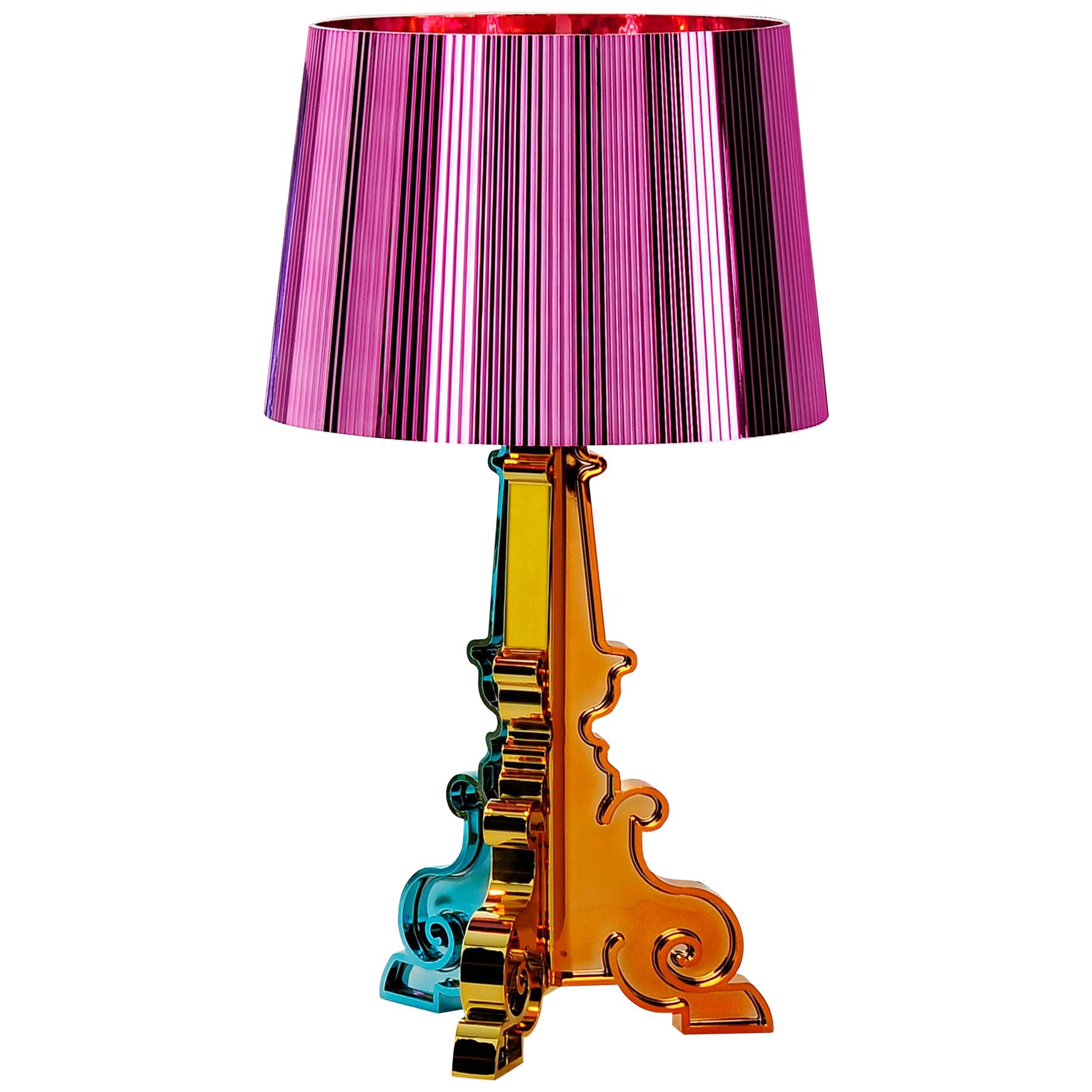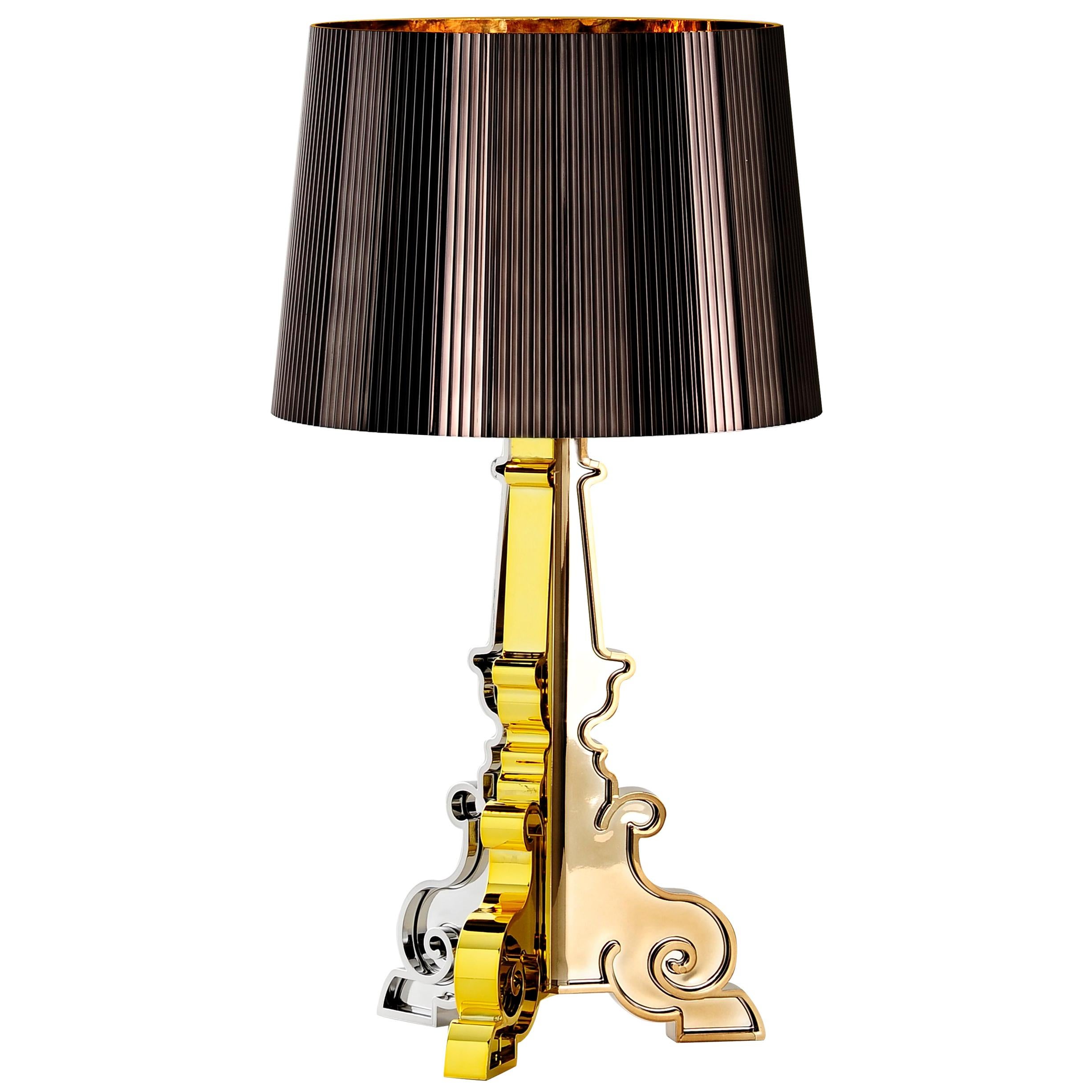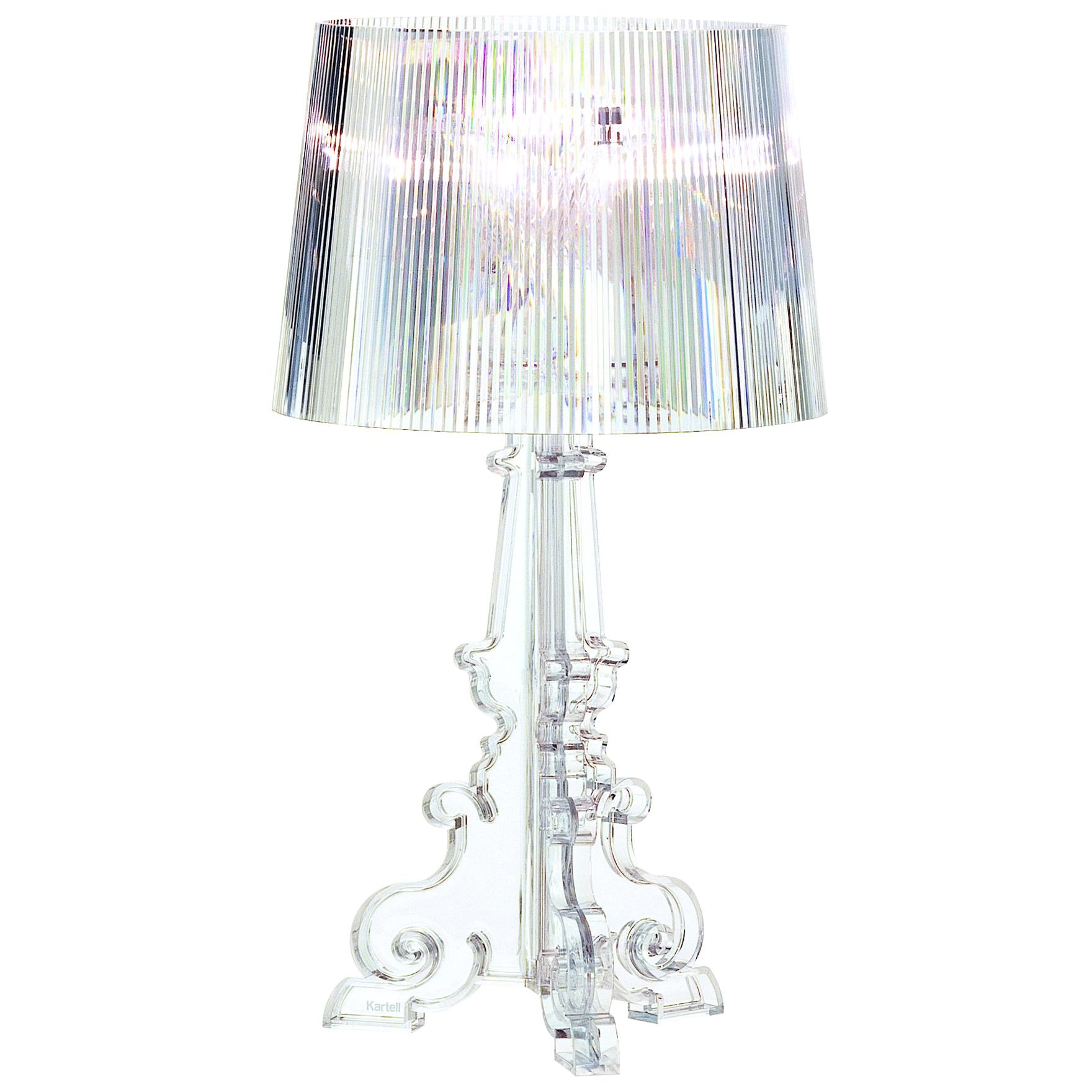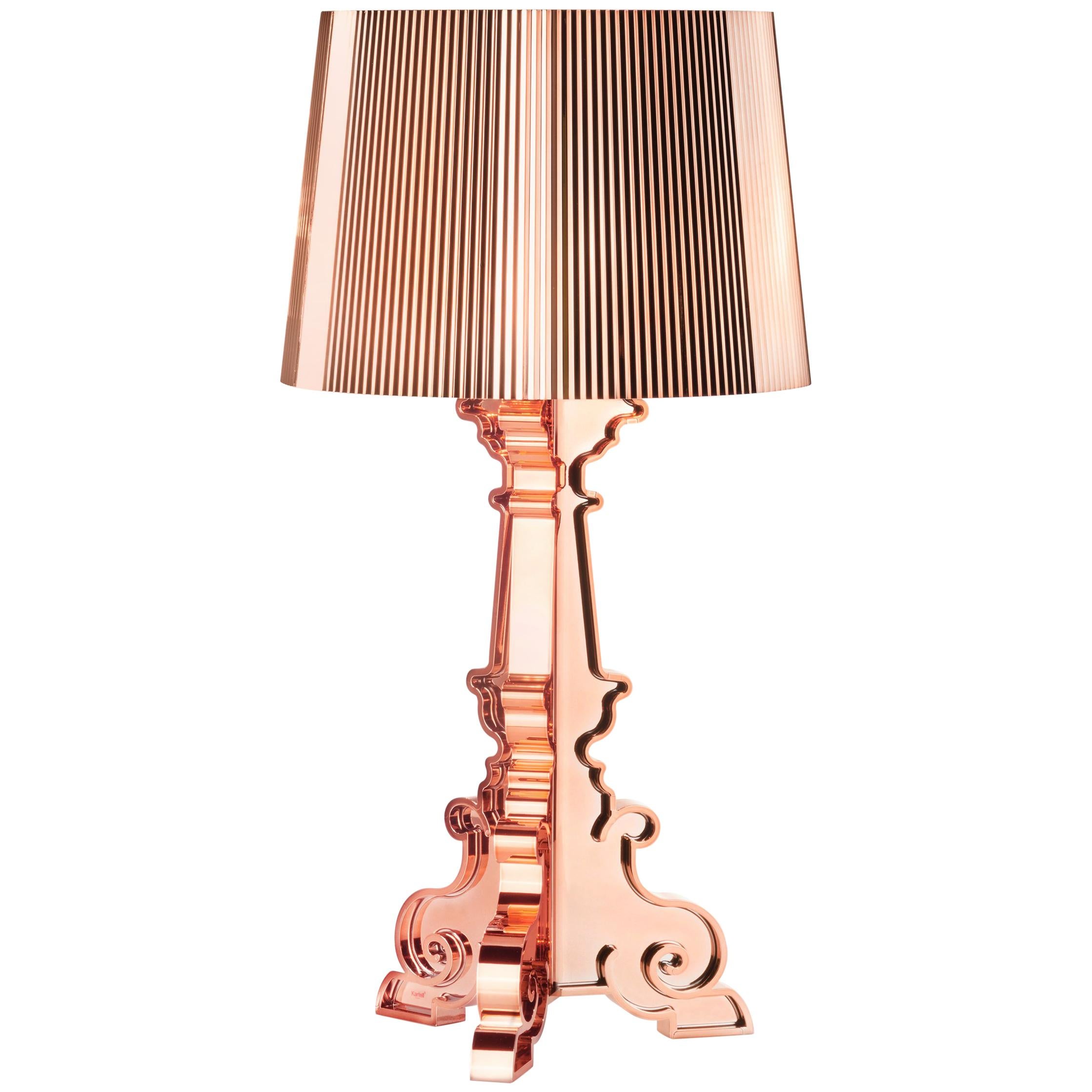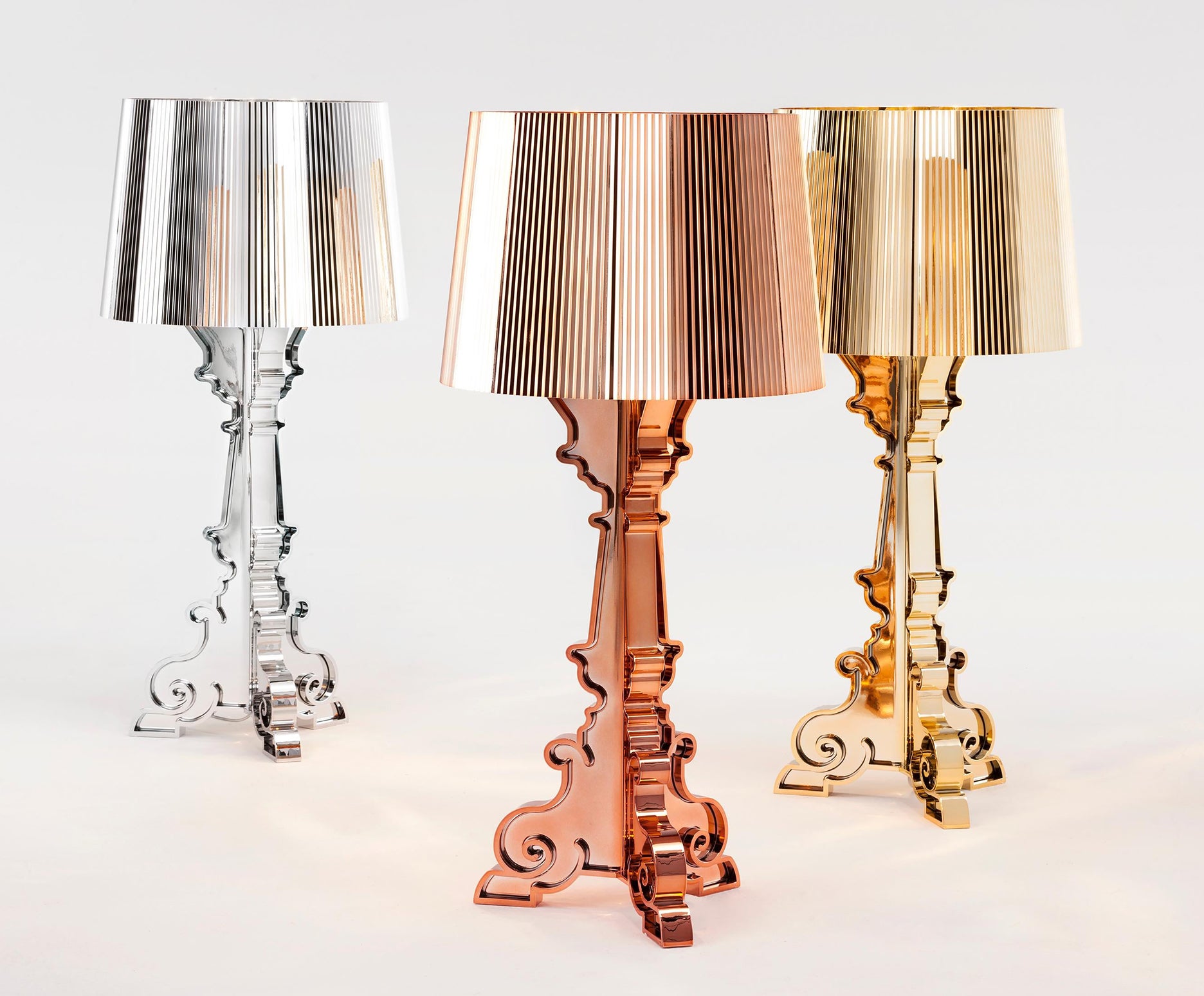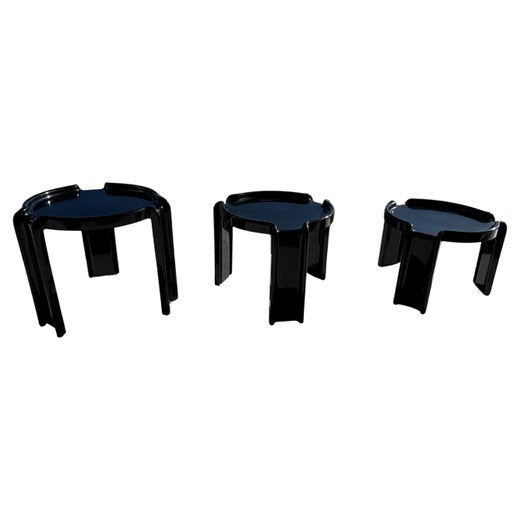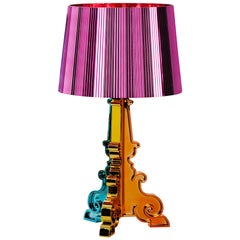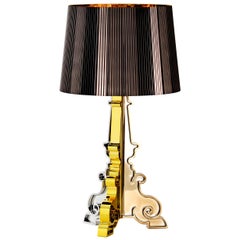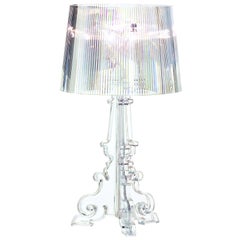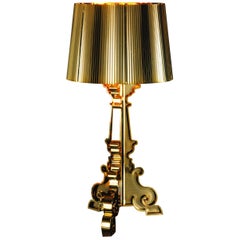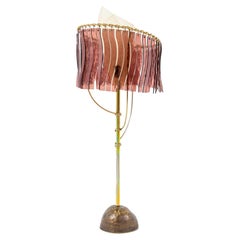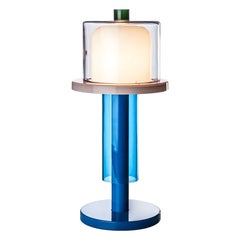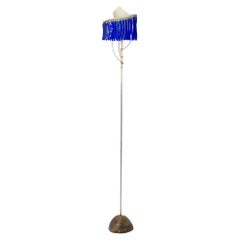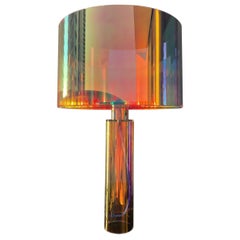Kartell Bourgie Lamp in Multicolored Blue by Ferruccio Laviani
About the Item
- Creator:Kartell (Manufacturer),Ferruccio Laviani (Designer)
- Design:
- Dimensions:Height: 31 in (78.74 cm)Width: 14.5 in (36.83 cm)Depth: 14.5 in (36.83 cm)
- Style:Modern (In the Style Of)
- Materials and Techniques:
- Place of Origin:
- Period:
- Date of Manufacture:Contemporary
- Production Type:New & Custom(Current Production)
- Estimated Production Time:8-9 weeks
- Condition:
- Seller Location:Brooklyn, NY
- Reference Number:Seller: 9072/X31stDibs: LU4536214578941
Bourgie Lamp
Inspired by Ashford and Simpson’s 1977 disco hit “Bourgie, Bourgie,” the Bourgie lamp by Italian designer Ferruccio Laviani (b. 1960) is a cheeky take on modern consumerism in the Western world. Laviani explained that he wanted to juxtapose our desire for wealth and status against our ever-increasing reliance on Chinese manufacturers to produce our so-called luxury goods. This, of course, was an irony that he deftly reveals with the lamp’s excessively showy baroque style and mass-market plastic material.
Laviani designed the Bourgie in 2003 for the Milan-based furniture company, Kartell, where he’d been working for 12 years, first as an exhibition designer and later as a furniture designer and art director. Kartell designers work mostly in plastics and thermoplastics, and the Bourgie lamp was no exception. For his Bourgie, Laviani used either a transparent or batch-dyed polycarbonate, which is both easy to recycle and incredibly durable. The lamp is currently offered in nine colorways that range from a simple translucent to a carousel of gold, turquoise, fuschia and orange.
Laviani told the New York Times that Dolce & Gabbana was a client when he conceived of the Bourgie lamp. “They came from baroque roots; it’s a part of the DNA of their company,” he said of the Italian luxury fashion house. “I always say I would never use gold if I’d never worked with Dolce & Gabbana. When I worked with gold in the Bourgie lamp, I was no longer afraid to use gold. I learned how to use it. It’s okay.”
Each variation of the shade casts different playfully colored shadows, making the lamp a statement piece for a living room or office.
Born in 1960 in Cremona, Italy, Laviani studied at a number of prestigious schools, eventually earning a degree in architecture from the Polytechnic University of Milan in 1986. Since then, he has worked with a number of manufacturers and design companies as an architect and product and interior designer.
In 2013, Kartell invited 14 contemporary designers to reimagine the Bourgie lamp in their own style to celebrate the lamp’s 10-year anniversary. Philippe Starck, Christophe Pillet, Patricia Urquiola and Nendo were a few to take on the challenge, creating wild, whimsical and worshipful renditions of the classic.
Kartell
The Italian design giant Kartell transformed plastic from the stuff of humble household goods into a staple of luxury design in the 1960s. Founded in Milan by Italian chemical engineer Giulio Castelli (1920–2006) and his wife Anna Ferrieri (1918–2006), Kartell began as an industrial design firm, producing useful items like ski racks for automobiles and laboratory equipment designed to replace breakable glass with sturdy plastic. Even as companies like Olivetti and Vespa were making Italian design popular in the 1950s, typewriters and scooters were relatively costly, and Castelli and Ferrieri wanted to provide Italian consumers with affordable, stylish goods.
They launched a housewares division of Kartell in 1953, making lighting fixtures and kitchen tools and accessories from colorful molded plastic. Consumers in the postwar era were initially skeptical of plastic goods, but their affordability and infinite range of styles and hues eventually won devotees. Tupperware parties in the United States made plastic storage containers ubiquitous in postwar homes, and Kartell’s ingenious designs for juicers, dustpans, and dish racks conquered Europe. Kartell designer Gino Colombini was responsible for many of these early products, and his design for the KS 1146 Bucket won the Compasso d’Oro prize in 1955.
Buoyed by its success in the home goods market, Kartell introduced its Habitat division in 1963. Designers Marco Zanuso and Richard Sapper created the K1340 (later called the K 4999) children’s chair that year, and families enjoyed their bright colors and light weight, which made them easy for kids to pick up and move. In 1965, Joe Colombo (1924–78) created one of Kartell’s few pieces of non-plastic furniture, the 4801 chair, which sits low to the ground and comprised of just three curved pieces of plywood. (In 2012, Kartell reissued the chair in plastic.) Colombo followed up on the success of the 4801 with the iconic 4867 Universal Chair in 1967, which, like Verner Panton’s S chair, is made from a single piece of plastic. The colorful, stackable injection-molded chair was an instant classic. That same year, Kartell introduced Colombo’s KD27 table lamp. Ferrierei’s cylindrical 4966 Componibili storage module debuted in 1969.
Kartell achieved international recognition for its innovative work in 1972, when a landmark exhibition curated by Emilio Ambasz called “Italy: The New Domestic Landscape” opened at New York’s Museum of Modern Art. That show introduced American audiences to the work of designers such as Gaetano Pesce; Ettore Sottsass, founder of the Memphis Group; and the firms Archizoom and Superstudio (both firms were among Italy's Radical design groups) — all of whom were using wit, humor and unorthodox materials to create a bracingly original interior aesthetic.
Castelli and Ferrieri sold Kartell to Claudio Luti, their son-in-law, in 1988, and since then, Luti has expanded the company’s roster of designers.
Kartell produced Ron Arad’s Bookworm wall shelf in 1994, and Philippe Starck’s La Marie chair in 1998. More recently, Kartell has collaborated with the Japanese collective Nendo, Spanish architect Patricia Urquiola and glass designer Tokujin Yoshioka, among many others. Kartell classics can be found in museums around the world, including MoMA, the Victoria and Albert Museum and the Cooper Hewitt, Smithsonian Design Museum. In 1999, Claudio Luti established the Museo Kartell to tell the company’s story, through key objects from its innovative and colorful history.
Find vintage Kartell tables, seating, table lamps and other furniture on 1stDibs.
- ShippingRetrieving quote...Shipping from: Perth Amboy, NJ
- Return Policy
More From This Seller
View All21st Century and Contemporary Italian Modern Table Lamps
Plastic
21st Century and Contemporary Italian Modern Table Lamps
Plastic
21st Century and Contemporary Italian Modern Table Lamps
Plastic
21st Century and Contemporary Italian Modern Table Lamps
Plastic
21st Century and Contemporary Italian Modern Table Lamps
Plastic
21st Century and Contemporary Italian Modern Table Lamps
Metal
You May Also Like
1990s Italian Modern Table Lamps
Brass
21st Century and Contemporary Italian Table Lamps
Glass
1990s Italian Modern Floor Lamps
Metal, Brass
2010s European Modern Table Lamps
Plexiglass
Vintage 1970s Italian Mid-Century Modern Table Lamps
Fabric, Murano Glass
2010s French Modern Table Lamps
Metal
